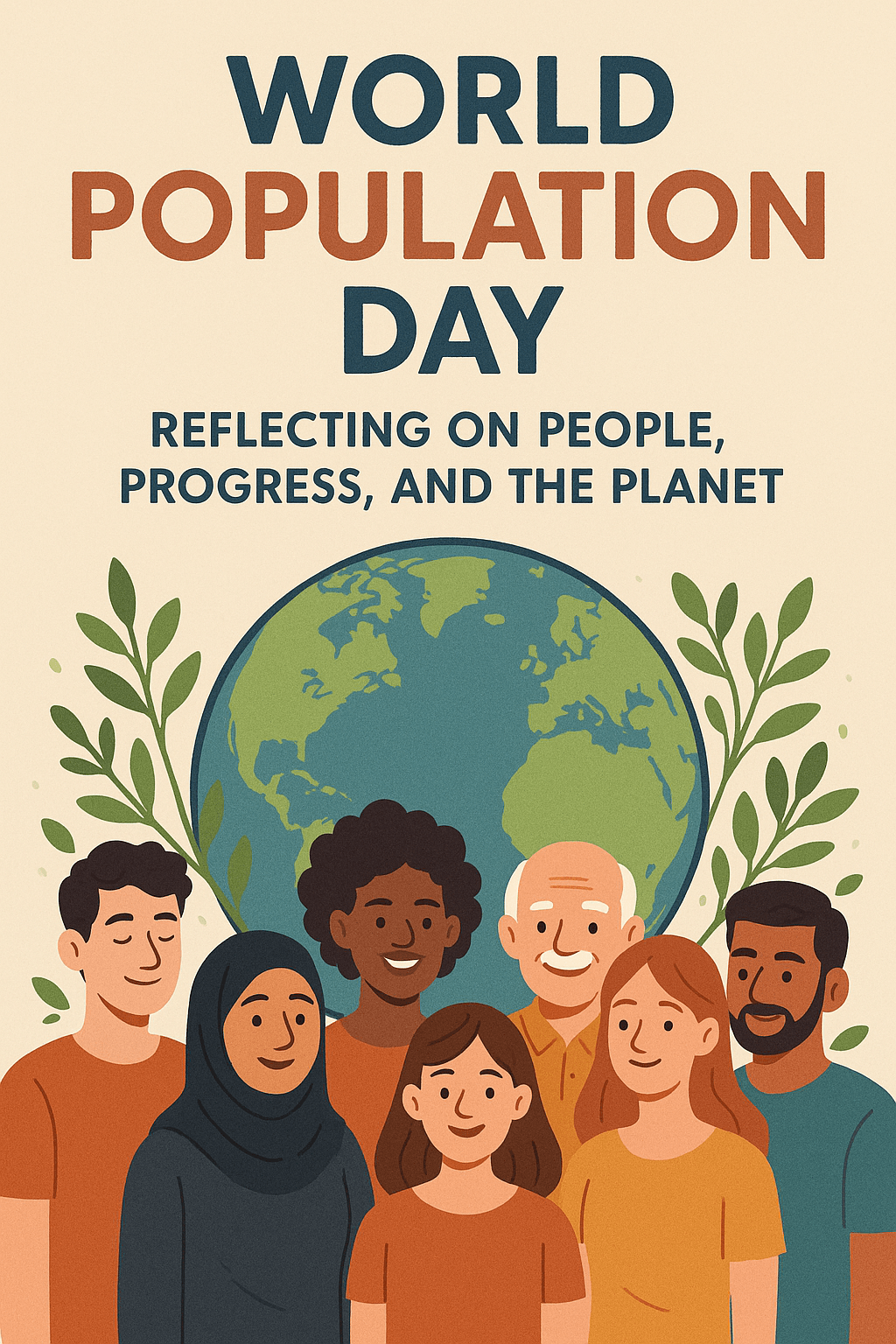World Population Day: Reflecting on People, Progress, and the Planet
Observed every year on July 11, World Population Day is a vital reminder of the importance of population issues and their far-reaching impacts on development, sustainability, and human well-being. Established by the United Nations Development Programme (UNDP) in 1989, this day encourages global awareness and action on challenges and opportunities related to the world’s population.
The Origin of World Population Day
The genesis of World Population Day can be traced back to July 11, 1987, when the world’s population reached five billion people. Recognizing the significance of that milestone, the UNDP proposed an annual observance to spotlight the urgency of population-related concerns. Since then, World Population Day has grown into a global platform to discuss issues ranging from reproductive health and gender equality to urbanization, climate change, and resource management.
Why Population Matters
Today, the global population exceeds 8 billion, a number that reflects both human progress and new challenges. Longer life expectancy, lower infant mortality, and improved healthcare have all contributed to population growth. However, this growth is not evenly distributed. While some countries experience rapid population increase, others face declining birth rates and aging populations.
Population dynamics influence nearly every aspect of development. Rapid growth can strain health care systems, education, housing, and employment, especially in developing countries. On the other hand, aging populations present economic and social challenges, such as labor shortages and rising healthcare costs. World Population Day brings these diverse issues into the spotlight, prompting dialogue and policy innovation.
The 2025 Theme: “People and Planet: Striking a Balance”
Each year, World Population Day is centered around a theme that reflects pressing global concerns. The 2025 theme, “People and Planet: Striking a Balance,” highlights the delicate relationship between human progress and environmental sustainability. As climate change intensifies and natural resources become increasingly scarce, the need to balance population growth with planetary health has never been more urgent.
The theme also calls attention to the need for equity—ensuring that population policies are inclusive and human rights-based. It challenges governments and societies to make development choices that prioritize both the welfare of people and the protection of the environment.
Focus Areas of World Population Day
World Population Day serves as a platform to address a broad range of issues including:
Reproductive Health and Rights: Ensuring access to contraception, family planning, and sexual education is essential for empowering individuals—especially women and girls—to make informed decisions about their bodies and futures.
Gender Equality: Addressing gender disparities in education, employment, and health care contributes to sustainable population management and economic growth.
Youth Engagement: With over 1.8 billion young people in the world today, investing in education, employment, and civic participation is crucial for a stable future.
Urbanization and Migration: Rapid urban growth requires smart planning to ensure cities remain livable, inclusive, and resilient.
Climate change and Sustainability: Population strategies must align with efforts to combat climate change and protect ecosystems.
The Role of NGOs and Civil Society
Non-governmental organizations (NGOs) play a critical role in advancing the goals of World Population Day. From grassroots advocacy to international campaigns, NGOs work tirelessly to improve access to reproductive health services, promote gender equity, and educate communities about sustainable living.
Organizations like the UNFPA (United Nations Population Fund) lead global efforts in supporting population data collection, conducting research, and guiding national policies. NGOs also collaborate with governments, schools, and local leaders to ensure that population-related programs are culturally sensitive, inclusive, and effective.
On World Population Day, NGOs often organize awareness campaigns, workshops, health camps, and community dialogues to highlight pressing population issues. These initiatives help bridge gaps in understanding and foster public engagement.
Global Events and Observances
Countries around the world commemorate World Population Day with various events and activities. These may include:
Public seminars and panel discussions with policymakers and experts
Youth-led awareness drives and debates
Health screenings and family planning clinics
Social media campaigns using hashtags like #WorldPopulationDay and #PopulationMatters
Art exhibitions, contests, and cultural programs promoting the theme
These events aim to educate the public and motivate action, ensuring that population concerns remain central to development agendas.
Looking Ahead: Building a Sustainable Future
World Population Day is not just a day of reflection—it is a call to action. It reminds us that population trends are not just statistics; they represent real people with hopes, challenges, and aspirations. It invites us to think critically about how our choices today shape the world of tomorrow.
As we approach the midpoint of the 21st century, the global community must come together to ensure that population growth is managed in a way that respects human rights and planetary boundaries. Investments in health, education, gender equality, and climate action are key to achieving a future where all people can thrive.
Conclusion
World Population Day is a powerful opportunity to engage in conversations that matter. Whether it’s advocating for reproductive rights, supporting education for girls, or pushing for climate action, every voice counts. On July 11, let us reaffirm our commitment to a balanced, inclusive, and sustainable world—one where people and the planet can coexist and flourish in harmony.


Leave a Reply
You must be logged in to post a comment.